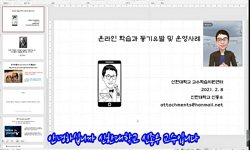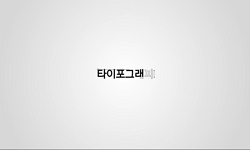우리나라에서 발견된 불경옥책은 「부모은중경」 · 「예불대참회문」 · 「월인석보」 등이며, 이번에 발표되는 「금강사건국5년명 옥책 예불대참회문」은 1960년대 초에 충남 부여지역의 ...
http://chineseinput.net/에서 pinyin(병음)방식으로 중국어를 변환할 수 있습니다.
변환된 중국어를 복사하여 사용하시면 됩니다.
- 中文 을 입력하시려면 zhongwen을 입력하시고 space를누르시면됩니다.
- 北京 을 입력하시려면 beijing을 입력하시고 space를 누르시면 됩니다.
https://www.riss.kr/link?id=A106596566
- 저자
- 발행기관
- 학술지명
- 권호사항
-
발행연도
2017
-
작성언어
Korean
- 주제어
-
등재정보
KCI등재
-
자료형태
학술저널
-
수록면
35-65(31쪽)
- 제공처
- 소장기관
-
0
상세조회 -
0
다운로드
부가정보
국문 초록 (Abstract)
이 옥책에는 불경인 「예불대참회문」이 23개의 옥간에 음각으로 새겨져 있으며, 제작연대는 마지막 옥간에 ‘금강사건국5년(金剛寺建國五年)’이라고만 새겨져 있어서 제작지와 제작연대에 관한 서지학적 연구가 필요한 상황이다. 특히 옥책은 일반인이 사용하던 물건이 아니고 특수계층인 왕실에서 주로 사용할 수 있었던 것이어서 불교를 숭상했던 왕이나 왕비가 사용하였던 불구(佛具)로 추정되며, 108배를 올릴 때 암송하는 「예불대참회문」이 새겨진 점으로 보아 불교를 숭상했던 시대의 유물로 볼 수 있다.
구성은 처음과 마지막 옥간을 제외한 21개의 옥간에 「예불대참회문」의 전문(全文)이 행초서로 새겨져 있으므로 문자 자체(字體)의 특징과 서체의 변화를 분석함은 제작시기의 시대서풍을 규명하는 데 있어서 척도가 될 수 있을 것이다.
이에 본고에서는 이 옥책의 서체를 서법상의 규칙에 의해 필획, 결구, 장법으로 나누어 살펴본 결과 몇 가지의 특징을 도출하였다. 첫째, 필획에서의 특징에서 동일자의 변화와 과장된 필획의 급격한 태세 변화에서 황산곡 필획이 뚜렷하게 보이고 있으며, 둘째, 결구에 있어서는 글자마다 점과 획의 조합·안배·연결의 변화와 점획과 허백의 포치를 조화롭게 구성하고 있다. 셋째, 장법상에 있어서는 각 행과 행, 각 글자와 글자의 안배와 배열에서 무밀과 대소의 조화를 이루어 기운 생동함을 표현하고 있다.
따라서 이 옥책의 서체 특징에서는 송대에 유행되었던 상의서풍(尙意書風)이 잘 나타나고 있으므로 송대의 영향을 많은 시기 이후에 제작되었던 불교 유물이라고 할 수 있다.
우리나라에서 발견된 불경옥책은 「부모은중경」 · 「예불대참회문」 · 「월인석보」 등이며, 이번에 발표되는 「금강사건국5년명 옥책 예불대참회문」은 1960년대 초에 충남 부여지역의 폐사지 부근에서 출토되었지만 올해에 이르러서야 세상에 소개되게 되었다.
이 옥책에는 불경인 「예불대참회문」이 23개의 옥간에 음각으로 새겨져 있으며, 제작연대는 마지막 옥간에 ‘금강사건국5년(金剛寺建國五年)’이라고만 새겨져 있어서 제작지와 제작연대에 관한 서지학적 연구가 필요한 상황이다. 특히 옥책은 일반인이 사용하던 물건이 아니고 특수계층인 왕실에서 주로 사용할 수 있었던 것이어서 불교를 숭상했던 왕이나 왕비가 사용하였던 불구(佛具)로 추정되며, 108배를 올릴 때 암송하는 「예불대참회문」이 새겨진 점으로 보아 불교를 숭상했던 시대의 유물로 볼 수 있다.
구성은 처음과 마지막 옥간을 제외한 21개의 옥간에 「예불대참회문」의 전문(全文)이 행초서로 새겨져 있으므로 문자 자체(字體)의 특징과 서체의 변화를 분석함은 제작시기의 시대서풍을 규명하는 데 있어서 척도가 될 수 있을 것이다.
이에 본고에서는 이 옥책의 서체를 서법상의 규칙에 의해 필획, 결구, 장법으로 나누어 살펴본 결과 몇 가지의 특징을 도출하였다. 첫째, 필획에서의 특징에서 동일자의 변화와 과장된 필획의 급격한 태세 변화에서 황산곡 필획이 뚜렷하게 보이고 있으며, 둘째, 결구에 있어서는 글자마다 점과 획의 조합·안배·연결의 변화와 점획과 허백의 포치를 조화롭게 구성하고 있다. 셋째, 장법상에 있어서는 각 행과 행, 각 글자와 글자의 안배와 배열에서 무밀과 대소의 조화를 이루어 기운 생동함을 표현하고 있다.
따라서 이 옥책의 서체 특징에서는 송대에 유행되었던 상의서풍(尙意書風)이 잘 나타나고 있으므로 송대의 영향을 많은 시기 이후에 제작되었던 불교 유물이라고 할 수 있다.
다국어 초록 (Multilingual Abstract)
‘The Great Repentance Text for Worship Ritual to the Buddha,’ which is a Buddhist sutra, is carved with intaglio on 23 jade parts in this jade book. However, "the Fifth Year Since the Foundation of the Geumgang Temple (金剛寺建國五年)" is the only indication of the year of production it contains, and therefore, a bibliographic study about production place and year is needed. Significantly, the jade book was not an object that the general public used, and could only be used by the royal family. So it is assumed that the jade book was a Buddhist instrument (佛具) that the king or queen used, and was a relic of the time that believed in Buddhism because the Great Repentance Text for Worship Ritual to the Buddha, which was recited when prostrating a hundred and eight times, was carved into it.
With the exception of the first and last jade part, the full text of the Great Repentance Text for Worship Ritual to the Buddha was carved in a semi-cursive and cursive style in 21 jade parts, and thus analyzing the characteristics of the letters and the change of font can be a criterion in investigation of the writing style of the time when it was made.
Therefore, this report deduced several characteristics by dividing the font of this jade book into stroke, structure, and closing style based on calligraphic rules. First, in terms of the characteristics of stroke, the stroke of Hwangsan-gok was showed clearly in the change of the same letter and rapid change of attitude in an exaggerated stroke. Second, structure is composed of the change of combination, arrangement, and connection of dots and strokes, and is composed of the arrangement of letters between dots, strokes and spare in harmony. Third, closing style expresses cheerfulness and vividness by harmonizing the sparseness and denseness, and the size in the arrangement of each line and letter. Therefore, this jade book can be said to be a Buddhist relic made after the time in which there was a strong influence of the Song Dynasty because the characteristic of the font shows style of Shang’yi(尙意書風) which was popular in Song Dynasty.
The Jade Book (okch’aek) of the Buddhist scriptures found in Korea includes The Sutra of Great Grace of Parents (pumo-ŭnjung-kyŏng), The Great Repentance Text for Worship Ritual to the Buddha (yebul-tae-ch’amhoimun), The Shakyamuni Record of the...
The Jade Book (okch’aek) of the Buddhist scriptures found in Korea includes The Sutra of Great Grace of Parents (pumo-ŭnjung-kyŏng), The Great Repentance Text for Worship Ritual to the Buddha (yebul-tae-ch’amhoimun), The Shakyamuni Record of the Moon Seal (wŏrin-sŏkpo), and so on. ‘The Great Repentance Text for Worship Ritual to the Buddha of the Jade Book Inscribed in the Fifth Year Since the Foundation of the Geumgang Temple’ (keumgang-sa kŏn’guk onyŏn-myŏng okch’aek yebul-dae-ch’amhoimun) was excavated near a ruined temple site in Buyeo area, Chungnam Province in the early 1960s, but it wasn’t until this year that it was introduced to the world.
‘The Great Repentance Text for Worship Ritual to the Buddha,’ which is a Buddhist sutra, is carved with intaglio on 23 jade parts in this jade book. However, "the Fifth Year Since the Foundation of the Geumgang Temple (金剛寺建國五年)" is the only indication of the year of production it contains, and therefore, a bibliographic study about production place and year is needed. Significantly, the jade book was not an object that the general public used, and could only be used by the royal family. So it is assumed that the jade book was a Buddhist instrument (佛具) that the king or queen used, and was a relic of the time that believed in Buddhism because the Great Repentance Text for Worship Ritual to the Buddha, which was recited when prostrating a hundred and eight times, was carved into it.
With the exception of the first and last jade part, the full text of the Great Repentance Text for Worship Ritual to the Buddha was carved in a semi-cursive and cursive style in 21 jade parts, and thus analyzing the characteristics of the letters and the change of font can be a criterion in investigation of the writing style of the time when it was made.
Therefore, this report deduced several characteristics by dividing the font of this jade book into stroke, structure, and closing style based on calligraphic rules. First, in terms of the characteristics of stroke, the stroke of Hwangsan-gok was showed clearly in the change of the same letter and rapid change of attitude in an exaggerated stroke. Second, structure is composed of the change of combination, arrangement, and connection of dots and strokes, and is composed of the arrangement of letters between dots, strokes and spare in harmony. Third, closing style expresses cheerfulness and vividness by harmonizing the sparseness and denseness, and the size in the arrangement of each line and letter. Therefore, this jade book can be said to be a Buddhist relic made after the time in which there was a strong influence of the Song Dynasty because the characteristic of the font shows style of Shang’yi(尙意書風) which was popular in Song Dynasty.
목차 (Table of Contents)
- 국문 초록
- Ⅰ. 서언
- Ⅱ. 옥책의 유래와 서체
- Ⅲ. 「금강사건국5년명 옥책 참회문」의 제작배경과 서체 특징
- Ⅳ. 결론
- 국문 초록
- Ⅰ. 서언
- Ⅱ. 옥책의 유래와 서체
- Ⅲ. 「금강사건국5년명 옥책 참회문」의 제작배경과 서체 특징
- Ⅳ. 결론
- Abstract
- 참고 문헌
동일학술지(권/호) 다른 논문
-
새 발굴 「금강사건국5년명 옥책 예불대참회문」의 구조와 성격
- 원광대학교 종교문제연구소
- 양은용(Yang Eun Yong)
- 2017
- KCI등재
-
- 원광대학교 종교문제연구소
- 기타지마 기신(北島義信)
- 2017
- KCI등재
-
- 원광대학교 종교문제연구소
- 北島義信(기타지마 기신)
- 2017
- KCI등재
-
- 원광대학교 종교문제연구소
- 이정재(Lee Joung Jae)
- 2017
- KCI등재





 DBpia
DBpia




